By: Michael Conner,
Psy.D
This conference was my first opportunity to immerse myself in a professional wilderness therapy training and to examine my own practices relative to much needed standards of care. As far as I can tell there are relatively few licensed mental health professionals in the country practicing wilderness therapy. Most wilderness therapy is offered by unlicensed counselors and paraprofessionals who may have formal education in a related field. There is a need and opportunity for qualified wilderness therapists. The evolution of wilderness therapy as a professional activity has its roots in a variety of fields. I learned about the wilderness "as a therapy" in my undergraduate education in forestry and working in the wilderness for nearly 7 years. I became a psychologist and therapist in 1986. I began taking patients into the outdoors in 1996 and began working as a wilderness therapist in 1998. In round about way it took me nearly 20 years to become a wilderness therapist. Naropa promises to help students find a much more direct path to a career as a wilderness therapist.
The symposium consisted of a keynote address, breakout sessions,
extended breakout sessions and one all day extended session in a
wilderness setting. The The wilderness therapy symposium was supported by the wilderness industry that worked with at-risk youth. Aspen Education sponsored the symposium and clearly had a strong staff presence. Keith Russell, PhD, researcher for Outdoor Behavioral Health Research Counsel presented his outcome research on Wilderness therapy for Youth at Risk. I was happy to see a few professionals from programs in the Pacific Northwest, Midwest, South and East coast. About 250 people attended the symposium. Most of these people were professionals interesting in learning more about wilderness therapy, professionals already in the field and students enrolled in the program. There were a number of professionals in related fields such as health psychology and gerontology. After the symposium I had the opportunity to meet with Deb Piranian, PhD, the Director of Naropa's Wilderness Therapy program. Dr. Piranian (above photo) and I talk about the program and her own experience as a wilderness therapist. She was a pioneer who left her office to find an environment that created an enhanced sense of relationship, openness, a stimulus for change, and safety for her patients. I'm not trained to officially review programs but I can tell you that the Wilderness Therapy program at Naropa has everything I would expect to see in a wilderness therapy program. They have obviously done their homework and talked with people in the field. I've been a clinical director of several programs and I would definitely consider offering an internship and hiring a graduate of Naropa. About Naropa University Narapo University is a free standing accredited educational institution. The campus is located in Boulder Colorado adjacent to the University of Colorado. Naropa was founded nearly 25 years ago. There is now a new branch campus in Oakland California. The wilderness program is a natural extension of their undergraduate program and their faculty who already provide a rich experiential and academic curriculum. The wilderness therapy program is actually an optional "emphasis" in the Transpersonal Counseling Psychology graduate program. Naropa offers Bachelor Arts degrees in Contemplative Psychology, Early Childhood Education, Interdisciplinary Studies, Music, Religious Studies, Traditional Eastern Arts, Visual Arts, Writing and Literature and Fine Arts in Performance. The university also offers a Master of Art degree Contemplative Psychotherapy, Environmental Leadership, Gerontology, Religious Studies, Somatic Psychology, Transpersonal Counseling Psychology and Transpersonal Psychology. Training and Continuing Education Opportunities In addition to the graduate degree in wilderness therapy, Naropa has recently embarked on a program to train professionals who already have advanced degrees in psychology, counseling, social work and related fields. This "clinical track" is a great opportunity from those professionals who would like to expand or change their current practice. I believe the clinical track is well suited to licensed professionals in social work, counseling and psychology who are interested in advanced training in wilderness therapy. Naropa also offers a "non-clinical track" for those individuals who need training to work as field staff or para-professional counselors in wilderness therapy programs. There are at least 50 wilderness therapy programs nation wide and hundreds of outdoor programs that are intended to be healing or therapeutic in nature. This non-clinical track is ideal for people who are interesting in leading, guiding and working with adults and youth in programs like Outward Bound, the National Outdoor Leadership School and wilderness programs that focus on outdoor behavioral health as well as "youth at-risk." The Future of Wilderness Therapy It will be many years before mainstream health care and health insurance will recognize wilderness therapy as a legitimate health care service. The cost of individual expeditions exceed current health insurance policies. It is cheaper to place people in buildings that create so called "economies of scale." So far, group expeditions, even when substantially proven to be cost effective treatment modality, will most likely be limited to a few progressive drug and alcohol treatment health care policies. The immediate future in wilderness therapy will be found with youth at-risk programs, fee-for-service patients, adult adventure programs and V.I.P programs (very important patient). VIP policies a new trend in health care where consumers purchase policies that cover health care to an extensive level. Most health insurance policies exclude services for children with behavioral problems and the public is already in most cases forced to pay for these services out of pocket. Schools, community mental health agencies and private boarding school are potential places where wilderness therapy is in the early stages of finding a home. Innovative and determined wilderness therapists can create a practice and earn a living. There is both a need and a demand for these services. Education and promoting these services by professionals will be necessary to advance the profession. Copyright 2003, Michael G. Conner |
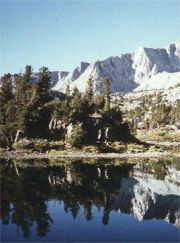
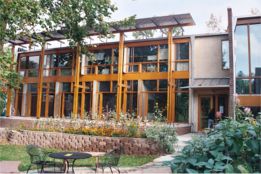
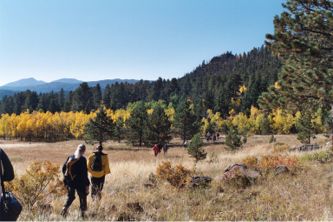 "Wilderness Therapy" has become a very popular topic in the media.
Unfortunately the media tends to misuse the term and associate
"Wilderness Therapy" has become a very popular topic in the media.
Unfortunately the media tends to misuse the term and associate
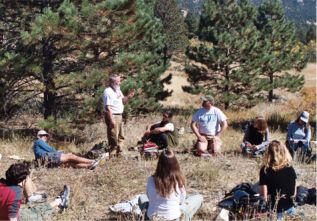 The first thing I should tell you about are the students I meet who
were enrolled in Naropa's Wilderness Therapy program. They are without
a doubt energetic, enthusiastic and knowledgeable. I was immediately
reminded of my own enthusiasm when I entered my doctoral program in
clinical psychology. And here was the best part. Every
The first thing I should tell you about are the students I meet who
were enrolled in Naropa's Wilderness Therapy program. They are without
a doubt energetic, enthusiastic and knowledgeable. I was immediately
reminded of my own enthusiasm when I entered my doctoral program in
clinical psychology. And here was the best part. Every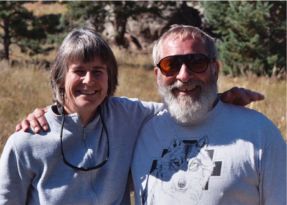 trainings consisted of didactic and experiential training and was
accredited by the National Board of Certified Counselors (NBCC). As for
myself, I especially enjoyed the all day session on Sunday that was led by
Roger Strachen, PhD
trainings consisted of didactic and experiential training and was
accredited by the National Board of Certified Counselors (NBCC). As for
myself, I especially enjoyed the all day session on Sunday that was led by
Roger Strachen, PhD